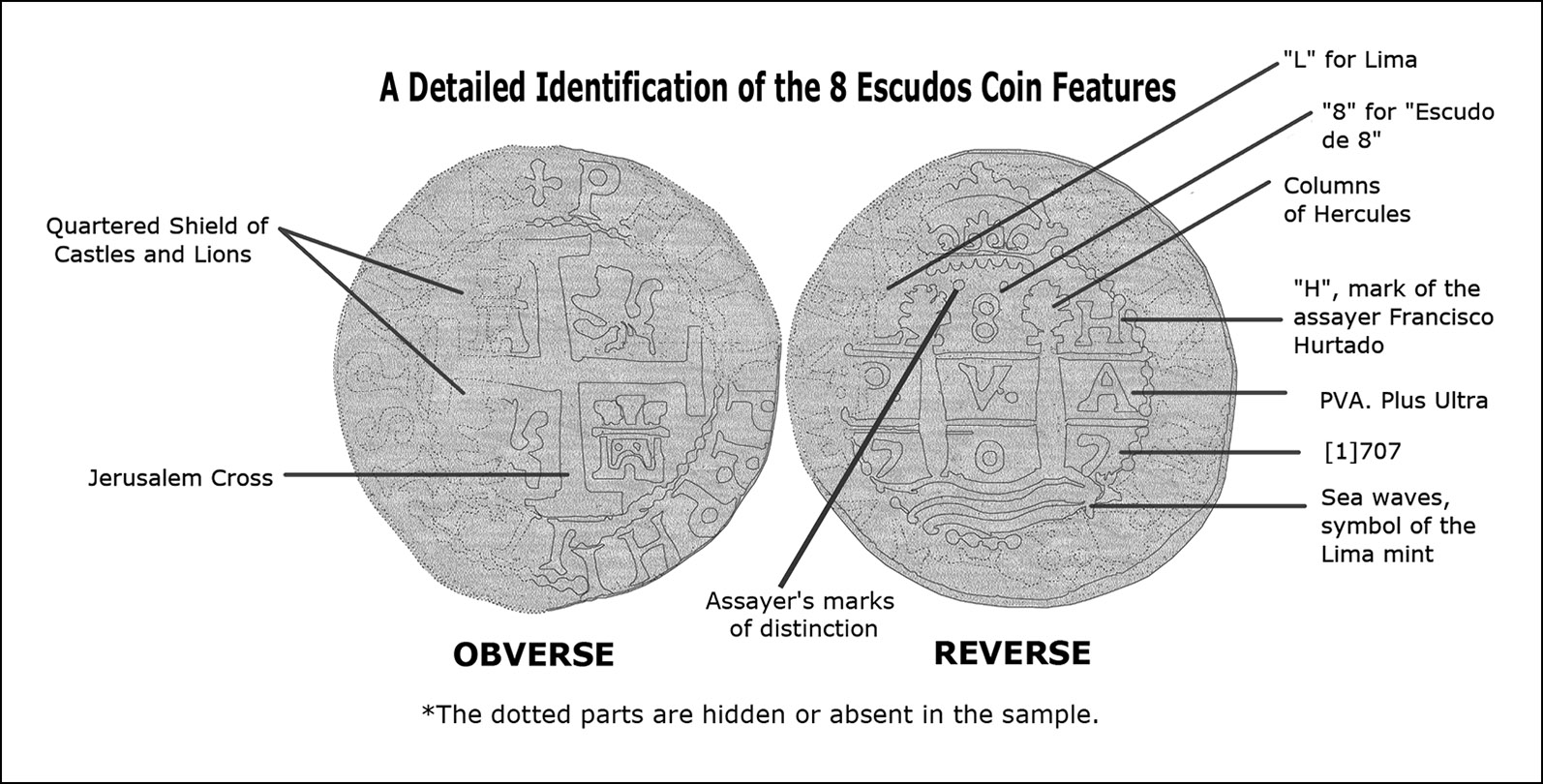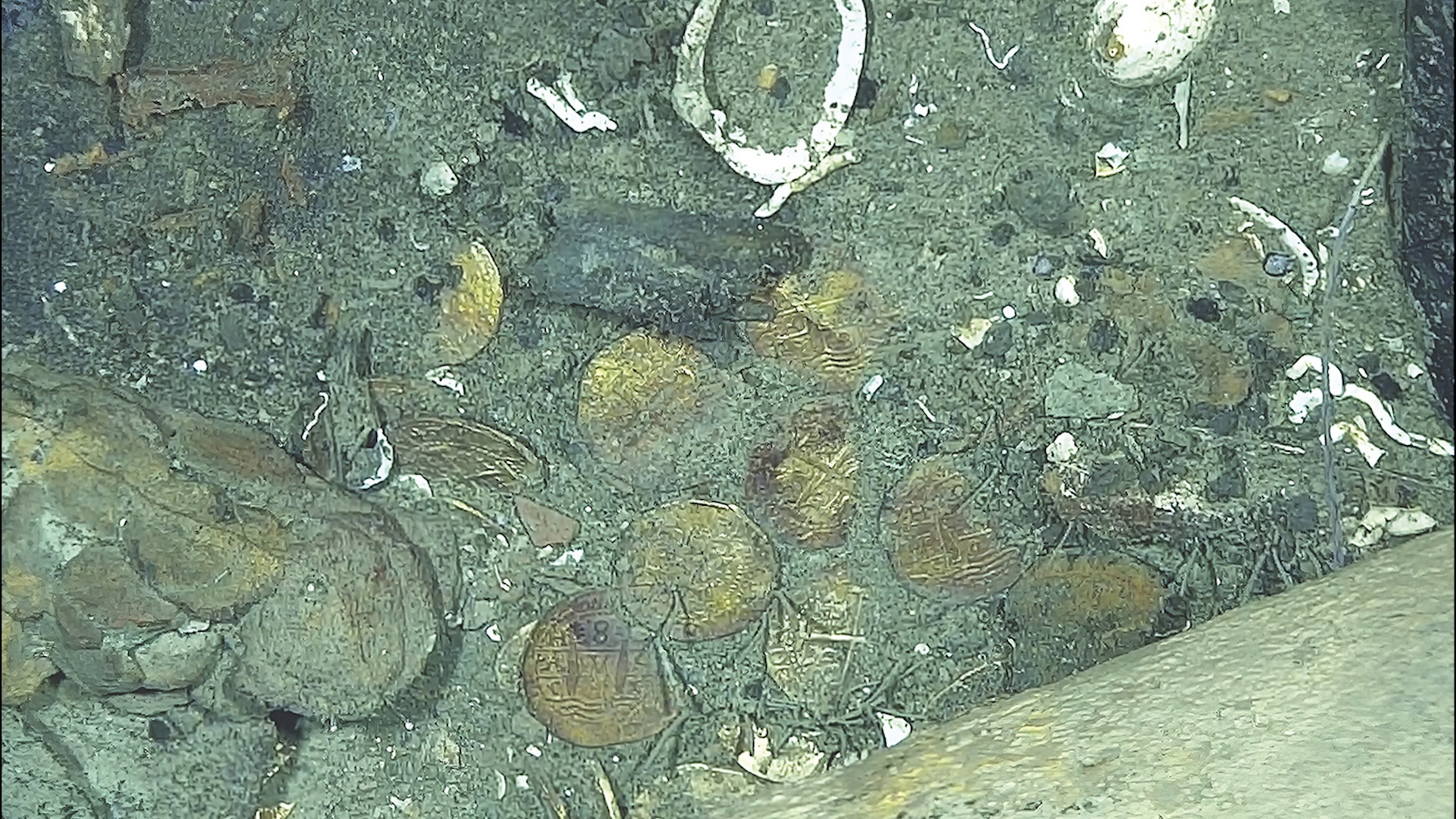New details of gold coins found off the coast of Colombia around the “world’s richest shipwreck” verify they are from the Spanish galleon San José, a treasure ship that sank in 1708 during a cannon duel with British warships.
The galleon was laden with up to 200 tons (180 metric tons) of gold, silver and uncut gemstones when it sank, and the treasure’s modern value may be as high as $17 billion, Live Science previously reported.
Colombia’s government hopes to recover some of the artifacts for a dedicated museum that is yet to be built. But there are opposing claimants, including the Spanish government, which asserts the wrecks of its naval vessels, no matter how old, remain the property of Spain.
The authors of a new study, published Tuesday (June 10) in the journal Antiquity, include researchers from Colombia’s navy and other Colombian authorities. Their analysis included studying images taken by remotely operated vehicles (ROVs) of dozens of rough coins that now lie scattered around the wreck at a depth of roughly 1,970 feet (600 meters).
In 2015, Colombia’s government announced that it had located the San José in the Colombian Caribbean near the city of Cartagena, and the observations were made during four ROV expeditions to the wreck in 2021 and 2022.
According to the study, the observations confirm that the coins and the nearby wreck debris are from the 1708 wreck of the San José.
Related: Treasure trove of gold and jewels recovered from a 366-year-old shipwreck in the Bahamas
Sunken gold
The researchers describe seeing dozens of rough gold coins — the total number is not known — at several locations within the shipwreck, surrounded by other artifacts from the cargo, guns and everyday life as it was on board more than 300 years ago.
They used high-definition photography to closely examine the coins and determined that they had an average diameter of 1.3 inches (32.5 millimeters) and a likely weight of 27 grams (about 1 ounce).
The ROV images revealed the coins’ designs. One side has a variation of a Jerusalem cross — one large cross surrounded by four smaller crosses — and a shield decorated with castles and lions. On the back, these coins show the “Crowned Pillars of Hercules above the waves of the sea,” with the waves being unique to the Lima Mint, the researchers wrote in the study.
They also noted that some bore distinctive marks that had been hammered into the metal, including the marks of an assayer — an expert who tests the purity of metal — from the Spanish mint in Lima, now the capital of Peru, in 1707.
By cross-referencing their observations with colonial records, the researchers determined that the coins and other artifacts came from the San José, the study said.
Study lead author Daniela Vargas Ariza, a maritime archaeologist at Colombia’s Almirante Padilla Naval Cadet School in Cartagena and the Colombian Institute of Anthropology and History in Bogotá, said these colonial Spanish coins were often cut from gold or silver ingots.
“Hand-struck, irregularly shaped coins — known as cobs in English and macuquinas in Spanish — served as the primary currency in the Americas for more than two centuries,” she said in a statement.

Richest shipwreck
The San José wreck is one of the most valuable ever found, and there are intense legal disputes about who has the right to recover it — although it’s not known if that’s possible. Colombia hopes some of the treasure could be sold to pay for the archaeological recovery effort of the entire ship, but Colombian law may prohibit selling anything deemed a historical artifact.
Spain also claims the shipwreck and all of its treasure, under an international convention on the Law of the Sea that states the wrecks of naval vessels belong to their original nation. But Colombia hasn’t ratified that convention, and critics say the provision is intended to protect modern warship technologies, not centuries-year-old treasure wrecks.
The San José was leading a treasure fleet of 18 ships from Cartagena bound for Europe on June 8, 1708, when it was attacked by a squadron of five British warships; Britain was Spain’s enemy during the War of the Spanish Succession at that time.
The three largest Spanish galleons fired back with their cannons, but the San José blew up and sank when its stores of gunpowder exploded; most of the Spanish fleet fled to safety in the harbor at Cartagena.
